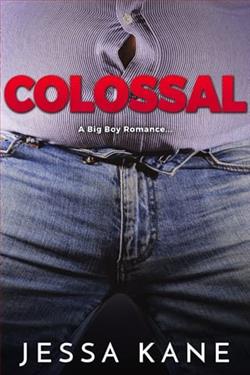Page 46 of The House on Prytania
“Supposedly St. Louis Number One is one of the most haunted cemeteries in the country,” Jolene pointed out. “But that could just be a rumor to encourage tourism, right?”
“Sure,” I said. Turning to my sister, I said, “What about you, Sarah? Are you okay to go in? Or are you going to start singing ABBA, too?”
She looked horrified. “If you ever catch me doing that, please just slap me. I give you permission. But no. I can manage.”
“Are you sure, Sarah?” Melanie asked. “I’ll be happy to wait outside with you. We can listen to my playlist while we wait.”
Sarah’s eyes widened in fear, either from the thought of spending time listening to Melanie’s playlist or because of the prospect of visiting a cemetery that might or might not be haunted. It was a toss-up. “Nope. I’m good. I’ve heard a lot about New Orleans’s aboveground cemeteries, and I’ve been dying to see one in person.” She laughed at her own joke, but her laugh sounded hollow. “Like you said, cemeteries aren’t the most haunted places around. How bad could it be?”
Sarah began walking in the direction of the cemetery. “She’s just like you at that age,” Melanie said, her expression a mix of exasperation and admiration. “Not willing to listen to anybody, and needing to make up her own mind about everything. I think I’m too old now to go through this again.”
For Melanie to admit to feeling her age meant she was serious. I slid my arm through hers. “Just give it another twelve or thirteenyears and she’ll be back to normal.” Pulling her with me, I said, “Come on—let’s take that tour. Like Sarah said, it can’t be that bad, right?”
“Right,” she said, her tone saying otherwise. “I only wish your father were here.”
“Why?”
“So I could yell at him for giving me two daughters who are just like him.”
CHAPTER 16
Jolene lifted her phone and began tapping the screen. “St. Louis Cemetery Number One is the first in the archdiocese to require guided admission, and the tours are usually sold out way in advance, but my first cousin twice removed on my mama’s side works for New Orleans and Company—the renamed visitors bureau.” Her fingers kept tapping as she talked, a talent unique to Jolene but not surprising.
She continued. “I’ve mentioned Suellen to you before, haven’t I? Suellen Larue is named after my grandmama’s mama. She was the one who was born with these huge earlobes, which, mercifully, she grew into. Thank goodness, or she’d still be called Dumbo, and she’s a grown woman. Anyway, she can get us in for a tour last minute. I can’t wait for you to meet her. She is a spitfire, let me tell you. She and her husband, Dale, have six kids, all boys. Can you imagine? They kept trying for a girl, but after the sixth boy she told Dale to either get himself snipped or she was going to tie it in a knot.”
Sarah snorted, and I took the opportunity to interrupt when Jolene drew a breath. “Any luck? With the tickets?”
Jolene looked down at her phone. “We’re in! The next tour startsin five minutes, so we can make it if we hurry.” We began walking quickly, following Jolene’s bright red head.
“Why would Beau’s mom want us to check out the cemetery?” Melanie asked.
“Maybe she’s a fan of Nicolas Cage?” Jolene said.
“What?” Sarah said. “I didn’t know he was dead.”
“He’s not,” Jolene said. “But he went ahead and built a nine-foot tomb in the shape of a pyramid for when it’s his time. The locals weren’t too happy at the intrusion from an outsider. If I were in one of the neighboring tombs, that would give me a reason to haunt the cemetery.”
“Who else is buried there?” Sarah asked.
“I know one name,” I said, having only recently learned it from Jorge, when he told me that was where I needed to go to get rid of the gris-gris bags that were piling up on my front porch. “The supposed tomb of voodoo priestess Marie Laveau.”
Sarah screwed up her face. “Why would Adele want us to go there?”
“There are over one hundred thousand people buried here, sweetie,” Jolene said. “Adele’s focus could have been any of the tombs. And if she wasn’t more specific, I say we just follow the tour guide and see if we find anything of interest.”
I watched as Sarah and Melanie once again shared a glance, and for the first time since the birth of the twins, I felt a twinge of jealousy. Not because I was no longer an only child, but because what Melanie and Sarah shared wasn’t something I could ever be a part of. I shook off the feeling like an ill-fitting coat, ashamed that the thought had crossed my mind, even if it had been just that once.
We met our tour guide and a small group of other visitors at the cemetery gate on Basin Street. When the guide asked us where everyone was from, I had to think for a moment before answering. “New Orleans,” I said, testing it out for the first time since moving there and buying my house. It felt oddly satisfying, as if I’d finally answered the question I’d been asking myself for a long time.
The guide, Mary, had a great sense of humor and was verypassionate about her job and the cemetery, creating a light atmosphere despite my constant worry about Melanie and Sarah. Melanie wore her earbuds and was humming softly to herself as she pretended to listen to the guide. Sarah’s lips were pressed together tightly, her face stoic as we walked down the first narrow aisle, which was flanked by decaying tombs nestled neatly between pristine marble mausoleums and rusted iron fencing. Flaky orange spikes and fleur-de-lis topped metal gates with broken hinges and missing rails, while the tombs were watched over by crumbling angels and cherubim and other statuary. I found the benign desecration oddly appropriate for a cemetery in New Orleans, a city known for its sinners as much as its saints, the lines separating good and evil sometimes blurred.
As we passed the various monuments, all set out in rows like houses in a neighborhood complete with street names and signs, it became clear why the aboveground cemeteries were called “Cities of the Dead.”
Next to a wall of what Mary referred to as “oven tombs”—appropriately, since the rounded brick fronts stacked one on top of another strongly resembled bread ovens—we stopped at a family mausoleum with over a dozen names inscribed on the stone plaque on the front, the first interment in 1855.
“It’s not very big. How do all those coffins fit into that single tomb?” a member of our group asked.
Mary smiled excitedly, as if she’d been waiting all morning for this question. “They don’t,” she explained. “We’re here in October, when the temperatures are much lower than in the heat of summer. The temperatures inside these tombs in the hotter months can reach one hundred fifty to two hundred degrees, assisting Mother Nature in a faster decaying process. The rule is that after a body is interred, they wait for one year and a day before reopening the tomb. At that point only bones are left. A cemetery worker will then take a pole and push the remains to the back of the tomb, making it ready for the next family member. This is where the expression ‘I wouldn’t touch that with a ten-foot pole’ comes from.”















